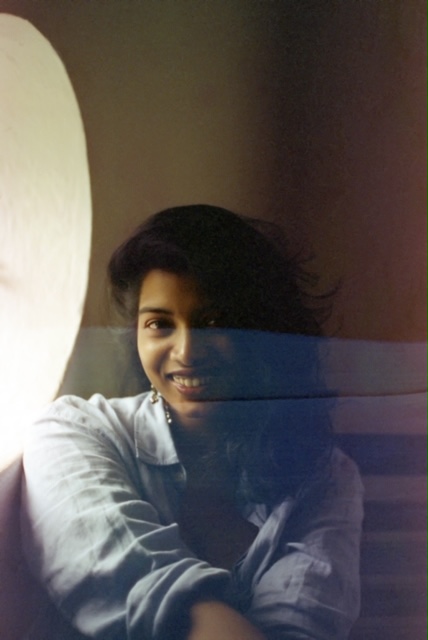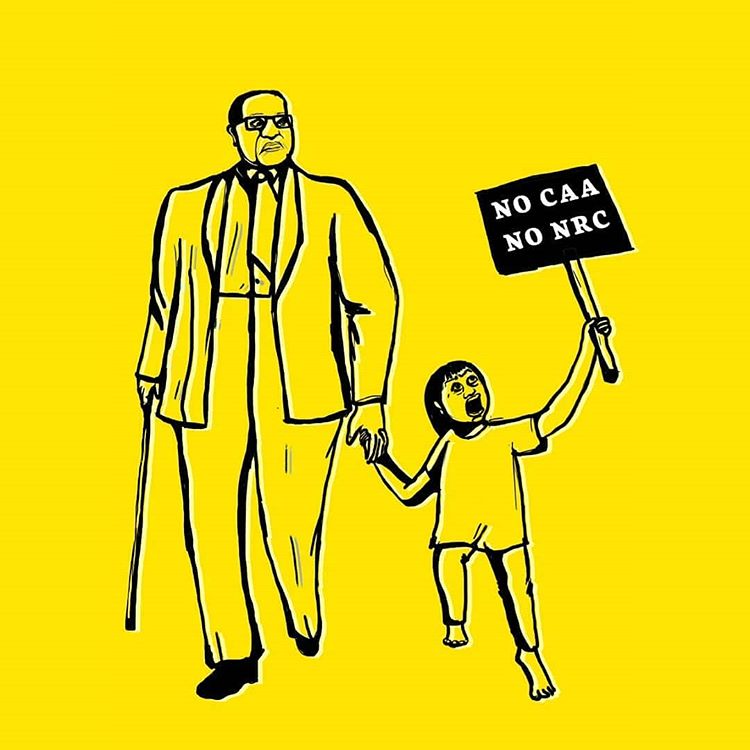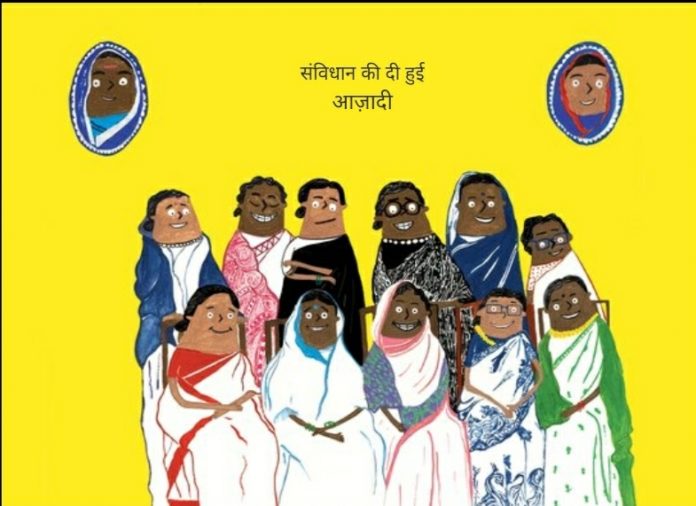Dalit artist Shrujana Niranjani Shridhar sees in art the opportunity to tell the unadulterated story of her community. Musheera Ashraf of TwoCircles.net writes on the young artist’s dreams and inspirations to commemorate Dalit History Month.
Shrujana Niranjani Shridhar is a 27-year-old independent illustrator based in Mumbai. For her, art means giving life to the multiple layers of life and a voice where everyone can express themselves – especially those who have been denied a voice in the mainstream culture.
In one of her recent illustrations, Shrujana shows a girl seen holding the hand of Dr Ambedkar, with her other hand carrying a placard declaring ‘NO CAA – No NRC’. The illustration came to her mind after she had been thinking about what Ambedkar would have felt in the current atmosphere in India.
Talking to TwoCircles.net, Shrujana says that “Baba Saheb (Ambedkar) gave India the constitution and we have to save it.”
“When I think about how Baba Saheb would have reacted to what’s going in the country, I think he would have felt heartbroken,” she told TwoCircles.net.
With her father belonging to a Scheduled Caste (SC) community and mother from an OBC Bahujan community, Shrujana says that as far as she remembers she always wanted to be an artist.
Shrujana says that people from Dalit and Bahujan community often think that they don’t have any legacy. “Raja Dhale urges people to look at the Buddhist movement in which the sculptures are Bahujan, which makes you realise that you are not a cultural orphan in this country and you feel proud to be in connection with the larger history,” she says.
Shrujana writes and illustrates children’s storybooks and is a co-founder of Dalit Panther Archive, which is a digital archive digitizing posters, magazines etc from the Dalit Panther movement.
After completing her schooling from St. Xaviers Junior College, Shrujana went to Arts College in Bombay to study art.

“I want art to be an expressible thing for everyone. Art should not be confined to art galleries, rich people’s home or students who draw, everyone should be able to represent themselves through art. I feel the responsibility to represent my community through this medium,” she says.
Art has always been one of the most effective mediums of reflecting the trappings of society. Putting forth the example of Bella Ciao, Shrujana says how the anti-fascist song of Italy has taken shape as the protest song in India.
“This is what art can do. One of the things which separate humans from animals is that we can articulate our ideas,” says Shrujana.
Shrujana’s first major published work was for Time Out India, where Shrujana did all the illustrations for a cover story on sex. Earlier, her illustrations were published in a storybook. “Every illustration I make, reflects my Bahujan point of view,” says Srujana, adding, “art has been an integral part of our community but we are still exploring visual art as compared to poetry and other forms.”
Initially, Shrujana followed Russian Revolution art, which is a propaganda art. “I was trying to chase after it, but then I realised that that’s not me, the colours which I was using were not satisfying,” she says.
Moving ahead of her earlier influences, Shrujana began working on her style, refraining from using the traditional bright ones. “Even if I’m doing political work, I try to use the kind of style that I truly enjoy,” she says, adding that, “some people falsely think propaganda art is a revolutionary art but representing everyday life and representing oppression is also revolutionary art.”
Deeply inspired by the ideology of B.R. Ambedkar, Shrujana claims that when she sees women coming together for a protest or women raising their voices against oppression the first image that comes to her mind is of Fatima Sheikh and Savitri Bai Phule.

“I made an illustration that depicts all the women who helped draft the Constitution of this country,” she says.
Shrujana feels that there is very little representation of Ambedkarites or anti-caste perspective in the society. Her future goals include starting a publishing house with the help of her friend to fill this gap where they could publish short storybooks for children.
“I think I exist because of Baba Sahib. If he would have not existed, then I couldn’t have imagined my existence. I owe everything in my life to him,” says Shrujana.
It is to encourage artists like Shrujana that Dalit History Month is observed in India. Through websites like Dalit Nation and Dalit History, a group of women celebrate April as Dalit History Month to commemorate Ambedkar Jayanti. The Dalit History Month month is collectively observed in India, Canada and the United States.
One of the founders of Dalit History Month, Thenmozhi Soundararajan, in one of her interviews says that she was inspired to create the project when she was tired of having her aspect of history mistold by ‘people of oppressor caste backgrounds.’


